
THE MANY FACES OF TRAINING


No matter what the profession — doctor, teacher, pilot or aircraft maintenance technician — training is an invaluable part of becoming the best that we can be. Training is an ongoing part of what we do. I go so far as to say that professionally speaking, learning and training are inseparable. We are always learning so we are always in training. The rapid changes in technology and systems make it impossible to stop learning … unless we no longer want to be at the top of our game.
Training has a special place in my life as I have spent more than 40 years conducting all kinds of avionics system classes. As I stated in the Verical Viewpoint section of this issue, “If you think that training is expensive, see what ignorance will cost you.” In the business of aviation, all too often ignorance is written in blood. That is a price that is too high to pay and can usually be avoided.
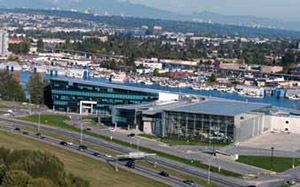
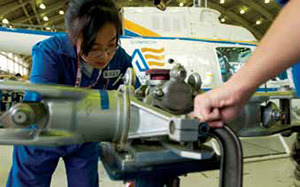
As training is our feature article, I thought that I would look at it from several different perspectives. First, we will look at the British Columbia Institute of Technology (BCIT) in Vancouver, British Columbia, Canada. BCIT has a terrific reputation and is one of the leading schools to get Transport Canada-approved training that will start you on your way to ultimately getting your aircraft maintenance engineer (AME) license. In Canada, an AME is similar to an A&P certificate in the U.S.
Next, we talked with FlightSafety International. FlightSafety is recognized around the world as one of the leaders in providing aircraft flight and maintenance training, and it provides Sikorsky S-76 training at its West Palm Beach, FL, facility.
Lastly we had a talk with Bell Helicopter’s Training Academy in Fort Worth, TX. As a major helicopter OEM that does its own training, its input is always worth a listen.
Our first interview at the British Columbia Institute of Technology (BCIT) was with Gordon Turner, associate dean of aerospace programs.
What is the British Columbia Institute of Technology all about?
That’s a big question, because BCIT is a big place. I’ll try to give you the Cole’s Notes version (that’s CliffsNotes for your American readers).
Established in 1964, BCIT is the largest polytechnic in British Columbia and one of the largest polytechnic institutions in Canada, with more than 18,000 full-time and 28,000 part-time students enrolled annually. We offer practical, hands-on career credentials designed for the workplace, as well as master’s and bachelor’s degrees, diplomas and certificates spanning applied and natural sciences, business and media, computing and information technology, engineering, health sciences and trades. There are five main campuses, as well as satellite locations province-wide. BCIT’s international partnerships include training, education and research initiatives in South America, Central America, East Asia and Eastern Europe.
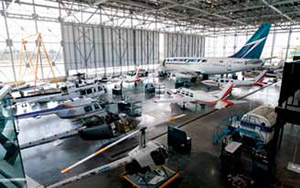
Within the trades programs is the School of Transportation. It’s unique in offering training in all three transportation modes: land, sea, and air. Motive power offers land-based training programs for, among other things, automotive, commercial, and heavy-duty service technicians. Marine has its own waterfront campus, providing training in navigation, marine engineering, seamanship and maritime security, as well as nautical science. Our aerospace technology campus (ATC) provides training in aircraft maintenance, avionics, gas turbine engines, airport operations and commercial pilot training.
The overarching principle of BCIT can be summed up as small classes taught by industry-experienced professionals providing hands-on training to create job-ready graduates.
What advantages does BCIT offer over other schools that offering competing programs?
The aircraft maintenance engineer program at BCIT was the first program in North America to have its basic training organization accredited under both Canadian and European standards. Graduates of our program leave with an 18-month credit toward the 48 months of experience required to apply for a basic aircraft maintenance engineer license. Graduates are required to document their on-the-job hours in a logbook as proof of experience and skill before applying to Transport Canada for the license. The knowledge, skills and attitudes gained by students in our program positions them to be successful in that final step toward obtaining a license. As we advertise, “It’s your career. Get it right.”
At the programs level, our aircraft maintenance (AME M) and avionics programs (AME E/B2) are both accredited by Transport Canada (TC) and the Canadian Council for Aviation and Aerospace (CCAA). CCAA is a national sector council that defines occupational standards for many of the occupations in Canadian aviation and is an important element in helping us define up-to-date and relevant curriculum. The AME E/B2 program is also accredited under the European Aviation Safety Agency (EASA) and graduates are eligible to receive a certificate of recognition upon completion of the program. In addition, as an EASA-approved 147 school, we can offer module exams to eligible aircraft maintenance professionals who wish to obtain an EASA B1 or B2 license. As you can imagine, our programs, particularly our AME M and our airport operations programs, are popular with international students who make up about 40 percent of the 400 or so students at the aerospace campus.
BCIT also offers a unique and very successful pedagogical structure, born from our Commonwealth history and with its roots in Royal Air Force (RAF) training. The early developers of BCIT’s aerospace programming were graduates of the British Aircraft Apprentice Scheme, which began at Halton in Buckinghamshire in 1920, and was designed to produce a pool of skilled aircraft mechanics for the RAF. The Scheme placed a heavy emphasis on hands-on workshop training. Typically, these boys — and they were boys, averaging around 15 years of age — spent 20 hours a week in the workshops, nine hours on physical training and eight hours in the classroom. Final examination marks, which determined rank and pay, were based on a combination of skill of hand and trade knowledge.
Today, we have raised the entry age, dropped the physical training requirement, and women compose approximately five percent of our AME trainees. The commercial pilot program averages 15 percent and air ops averages 50 percent. One constant, we still depend on that cornerstone of hands-on, practical training. Across all programs, 40 to 50 percent of training is in-class theoretical education and the remaining 50 to 60 percent is spent in the workshops and in our hangar. We also keep class sizes small, with a maximum of 17 per class, so students can get the most from their instructors who are drawn directly from industry, with a minimum of 10 years’ experience in the business, or in other words, instructors who have walked the talk.
In response to a growing provincial and federal demand for aviation workers, BCIT built a new, world-class 300,000-square-foot campus for its aerospace programs. Opened in 2007, the ATC produces about 270 graduates per year, with wait lists for all programs.
There were challenges in the design and construction of the building. We’re located in an environmentally-sensitive area on Sea Island, and our vertical construction was limited by the fact that we are directly under the flight path of YVR’s south terminal. The result is something truly unique, with the interconnected geometry of the buildings reflecting the winding banks of the Fraser River, which we rest on. The interior of the building is similar to a spiral galaxy, with a central core, an open, multi-level hub from which curved wings branch off, including 22 customized workshops that replicate industry conditions. We have more than 40 classrooms and labs, 36 faculty offices, one of the largest aviation libraries in North America, and what we call the crowning jewel of ATC, our 40,000-square-foot training hangar.
The three-story-high hangar (officially, the Honeywell Aerospace Education Hangar), houses 20 training aircraft, including a Boeing 737-200 donated by WestJet, and is girded on two sides by two levels of workshops. The other two sides are glass-enclosed, giving students views of aircraft on short final to runway 30 at YVR airport.
From a maintenance perspective, let’s talk about the aircraft maintenance programs and what they offer the current or perspective aviation maintenance technician.
The AME M is a full-time, 16-month program offering two intakes every eight weeks (with short breaks in December and August), awarding graduates with 128 credits and a diploma in technical studies, as well as the applicable regulatory accreditation. Students receive training in all aspects of aircraft maintenance, including disassembly, assembly, inspection, troubleshooting, documentation and regulations. We have a large selection of training aids and a diverse selection of aircraft, including heavy transport, turboprop, corporate jets and helicopters to aid in the practical elements of the course.
We have strong relations with industry locally, throughout the country and abroad. Our relationship with Eurocopter is a perfect example. Eurocopter has positioned a very popular AS350 helicopter in our hangar, on which our students can accomplish maintenance routines, making them, as we say, “job ready.” The helicopter is also used by Eurocopter for its own training purposes, bringing industry training right onto the campus.
Can you zone in a bit more specifically towards helicopter-related courses/programs?
British Columbia and western Canada have a large number of helicopters in operation. It is not surprising that our programs and our instructors are strong in this area. We have a specific AME M course dedicated to helicopters, and additional hands-on work as the students move into the last portion of the program, when they are spending more of their time in the hangar. Our AME E/B2 avionics students are not unfamiliar with helicopters, as they are assigned projects such as installations that may be accomplished on rotary-wing aircraft.
How long are the programs and can you define how many semesters, or the time line to complete/graduate from the program?
Our five main programs are all full time and have varying lengths for completion. The commercial pilot and the airport operations programs each run 64 weeks, with the pilot program providing 203.8 hours of flying time.
Our gas turbine program is completed over 38 weeks.
In the AME programs, category E/B2 is completed over 80 weeks, with the first 32 weeks dedicated to basic electronics before the student can advance to the avionics portion. The AME M program runs 64 weeks. Due to the popularity of the M program, popular because of the high demand for maintenance technicians in B.C., Canada, and world wide, we have two M intakes every eight weeks, which means M graduations every eight weeks. All of this is because of student investment in and loyalty to the aerospace campus (they like to show it off to their families and loved ones), which adds to the already jam-packed calendar of events and usage the campus supports. If you pause for a moment in the corridors, you are bound to hear a graduation speech!
Since Helicopter Maintenance is dedicated to, for and about helicopter maintenance professionals, please tell us some more about your helicopter-specific training.
As noted, our training days are split between classroom and workshop/hangar activity with Category M, that split is about 50/50, erring on the side of hands-on activity.In addition to the fixed-wing aircraft, our hangar contains five helicopters from light to medium, piston and turbine powered: a Robinson R22, two Bell 206 Jet Rangers (one runner and one cut-away — yes, an entire 206 cutaway, complete with color-coded controls), an AS350 and a recently received Sikorsky S-76. Students are required to accomplish projects and maintenance routines on these machines and are graded on their ability to perform tasks according to standards, using the correct tools and procedures to execute and document their work.
Upon graduation, what does the graduate have as credentials?
Focusing just on the AME M and AME E/B2 programs:
These graduates earn a diploma in technical studies, which has a TC reference number on it as evidence that the student is entitled to the 18-month credit toward their AME licenses. In addition, graduates also receive a CCAA certificate attesting that they have met the standards associated with that accreditation.
The AME E/B2 graduates, in addition to the above, if they have completed all the required EASA elements of the program, are awarded a certificate of recognition.
The gas turbine technician graduates receive a BCIT certificate of technical studies as well as a CCAA certificate. It is worth noting that our graduating gas turbine technicians for the last number of years have virtually a 100-percent job placement in industry, many graduating with employment already secured.
What companies, if any, seek your graduates for employment?
Our librarian compiles a list each year of companies that post listings specifically at the ATC for our students. Last year, that list was over 100 companies long and included such helicopter-centric companies as Canadian Helicopters, Heli-One, Blackcomb Aviation and numerous others. We have been producing aircraft maintenance professionals for over 56 years. These folks have permeated the industry and reach back to BCIT when they are looking to hire.
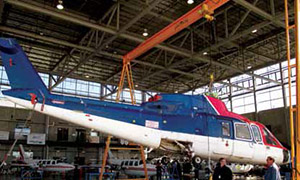
Our alumni survey from last year showed that 30 percent of all graduates from the ATC are working in the commercial rotary-wing segment of the aviation industry.
I should say that we also employ our own. As an example, Liz MacFarlane, the first female graduate in the AME program in 1978, went on to accrue nearly 30 years of experience with rotary-wing companies before returning to us as an instructor, and now as the project manager of our aerospace programs. The chief instructor of our aerospace programs, Bob Grasby, is also a BCIT graduate, and spent his career working on helicopters, as have many of our instructors.
BCIT is truly a great place to consider when deciding on where to start on your educational path to a career in aviation maintenance.
Our next interview is with FlightSafety International. For more than six decades, FlightSafety has been a world leader in professional aviation training, continually expanding both the scope of its training and its global training network. Today it provides more than one million hours of training to maintenance technicians, pilots and other aviation professionals at training locations in the United States, Asia, Canada, Europe, South Africa and South America. In addition to training, FlightSafety engineers and manufactures full flight simulators and other advanced training technology. Through an exclusive agreement with Pratt & Whitney Canada, it now also offers factory-authorized training on the full line of P&WC engines at 12 convenient locations around the world.
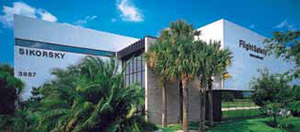
What advantages does FlightSafety offer in the way of helicopter maintenance training?
We offer superior classroom training that is developed in close collaboration with the manufacturer, ensuring accuracy, currency and latest best practices. Our proprietary training technology — developed and built by us — reflects our uncounted millions of hours of experience in the highly specialized field of aviation-specific instruction. We employ both state-of-the-art technology as well as hands-on practical training to ensure effective instruction. Still, our most important asset is our expert, experienced instructors. Our maintenance instructors must meet stringent certification and experience standards and must demonstrate an ability to connect with our customers.
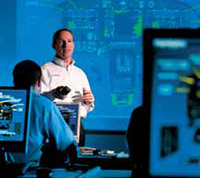
Why would a helicopter technician attend an initial training course?
Our type-specific initial courses offer an in-depth introduction to the aircraft, using courseware developed with the manufacturer and delivered by experienced, highly-qualified instructors in a learning environment that’s been honed over decades. In addition, many of our helicopter maintenance programs have earned international regulatory approval.
Who should attend?
Any technician, manager, supervisor or dispatcher currently involved in helicopter operations will greatly benefit from our training.
What is the course objective?
To provide technicians with the knowledge and experience required to safely, efficiently and accurately maintain and troubleshoot system faults, thereby reducing overall operational costs for the aircraft and improving dispatch reliability.
What is a typical course length?
Most initial maintenance courses average four weeks in duration. Other specialty courses such as avionics, autopilot and troubleshooting courses average a week in length.
Why would a helicopter technician attend a master technician course?
FlightSafety master technician professional development training programs are designed for the maintenance professional who wants to do more and achieve more. Our master technician training focuses on a variety of subjects that build on proven technical abilities with training in skills that would otherwise take years to acquire, making a technician even more of an asset to any organization. Our progressive curriculum follows a five-step process, ensuring that you receive instruction in all the skills necessary to become a master technician on a specific model. To earn a master technician airframe certificate, candidates complete four mandatory core courses and then choose one course from a list of five electives. In addition, we offer master technician certificates in avionics, composites, engines, management and regulatory.
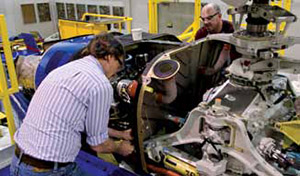
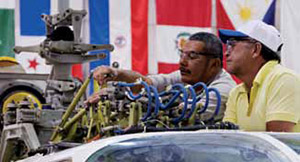
Who should attend?
Any technician involved in helicopter maintenance, avionics maintenance, Pratt & Whitney Canada engine maintenance or the maintenance and repair of composite structures.
What is the course objective?
To deliver in-depth instruction that creates technicians with advanced knowledge and diagnostic skills — the highest level of training available for each specific aircraft type — as well as advanced instruction in management, avionics, engine and regulatory.
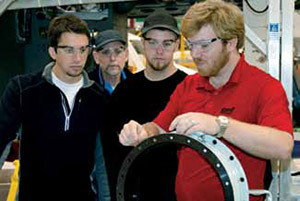
What is a typical course length?
Achievement of master technician status is a multi-step process consisting of courses that vary in length, depending on the program.
How often does FlightSafety recommend recurrent training for technicians, and why?
We recommend recurrent or update training on a yearly basis to stay up to date on the latest airworthiness directives, service bulletins, service notices and design changes that affect maintenance on their specific aircraft.
What is covered in a typical initial course?
A typical initial course covers general and detailed operation, system limitations, maintenance practices and troubleshooting and diagnostic procedures for the airframe, and avionics/autopilot systems on the aircraft. Courses integrate human factors training throughout.
What is covered in a typical master technician course?
The achievement of master technician status is a multi-step process and each of the courses required to achieve this milestone has its own specific content.
Are any maintenance courses available as eLearning courses?
Yes, we offer a wide range of helicopter maintenance operational training in convenient eLearning format, including such topics as cold weather operations, maintenance required vertical separation minimums (RVSM) and safety management systems. We also offer LiveLearning, in which students participate from their own home or office, interacting directly with an online instructor. Those courses include principles of troubleshooting, fatigue management and more.
How popular are they?
We’re experiencing steadily increasing demand for both eLearning and LiveLearning courses and are constantly adding new courses to meet needs.
What do you see as the pros and cons of eLearning?
We see no downside to appropriate eLearning subjects. They save time and travel expenses while allowing customers to train at a place and time of their own choosing. Of course, some course content requires more in-depth or hands-on instruction — we don’t offer that material in eLearning or LiveLearning formats.
Are any of your maintenance courses IA approved?
Yes, all of our maintenance courses have approval for IA renewal.
What do you offer to make your courses Part 147 acceptable?
We maintain relationships with all regulatory agencies. We offer training courses that are approved by EASA, CASA, CAAC and Transport Canada, and we work closely with our other operators to assist with any additional approvals requested.
Our last interview is with Bell Helicopter in Fort Worth, TX. Training has been an integral part of Bell Helicopter’s customer support program for more than 60 years. They have trained more than 115,000 customers from every market segment in more than 120 countries throughout the world.
Its mission statement is: “To provide customers with innovative, world-class training solutions that enhances their ability to safely and efficiently perform their missions.”
What is the Bell Training Academy all about?
Since 1946, the Bell Training Academy (BTA) has been committed to providing industry-leading training programs that create better, safer flight operations. The BTA staff takes pride in delivering the finest helicopter training in the world with highly-skilled professional pilot and maintenance instructors. We work hard at developing innovative programs to take our customer’s pilot and maintenance skills to a whole new level.
Headquartered at the Fort Worth Alliance Airport, the BTA continues to incorporate the latest technological advancements into our aviation training programs and to invest in the development of new initiatives to promote further helicopter safety.
As the only OEM training facility for Bell Helicopter, the BTA is focused on continuous improvements and upgrades to our coursework and our resources. Improvements in our helicopter training programs include upgrades and enhancements to our flight training devices and composite maintenance trainers, aircraft fleet modernization, practice area and runway extensions, and the incorporation of a 30-foot elevated platform for offshore, pinnacle and rooftop specific training. In addition, the BTA offers advanced programs such as the professional pilot program (P3) for pilot advanced training, first tesponder training for on-the-ground helicopter safety, a tactical flight officer course for law enforcement officials and non-destructive inspection training for technicians. We are approved by the FAA, EASA and Transport Canada to conduct training.
What are your facilities like?
The BTA has 18 multimedia classrooms, a maintenance training hangar, three technical labs, five flight training devices, and business center with phones and Internet access for use before class, after class, at lunch or during break time.
Our facility combines the latest innovations in training technology, the skills of multimedia specialists and highly competent instructors who ensure our students have an opportunity to learn and practice their skills in a safe environment.
Why would a helicopter mechanic attend an initial training course?
To increase the mechanics skill set to maintain the helicopter to Bell Helicopter specifications.
Who should attend?
All mechanics, regardless of their work experience. Experience is important; however, instruction received in the classroom and training lab is a great way to reinforce proper technique and to become informed on updates and new information. Training is complete after each student demonstrates an ability to perform to the course standards. These standards are set by Bell Helicopter for actual maintenance and operation of the equipment referencing the technical manuals.
What is the course objective?
Upon successful completion, the student is able to troubleshoot, inspect and perform helicopter maintenance, not including major repair or overhaul of the helicopter and its components. Students are measured by their ability to successfully adhere to acceptable airworthiness techniques, procedures and practices. Courses typically last two to three weeks.
What are the course graduation requirements?
Course completion is based on demonstrated skills and work habits in addition to an exam. We don’t grade based on speed, but rather on safety measures and approved maintenance procedures employed. All maintenance, repairs and alterations must be accomplished with the use of tools and equipment that meet our industry practices.
We grade based on the techniques, procedures and practices set forth in approved manuals for each applicable task.
How often does the Bell Training Academy recommend re-current training for mechanics, and why?
Every five years to help refresh the mechanics skills, and provide updates to changes in the technical manuals.
Are any of your maintenance courses IA approved?
All courses are IA approved for renewal per AC 8900.1 CHG 90.
“All FSDOs and IFOs will accept, without additional FAA review or further showing, maintenance technical training conducted by a manufacturer or its authorized representative on its TC, STC, TSO or PMA product, component or accessory for the purpose of IA renewals. These entities, however, must meet all the training requirements of this section with the exception of submitting for acceptance and obtaining a refresher course acceptance number.”
What do you offer to make your courses Part 147 acceptable?
All regulatory courses are Part 147-approved for the following agencies: Transport Canada Civil Aviation (TCCA), Civil Aviation Safety Authority (CASA) (Australia), Civil Aviation Authority of Singapore (CAAS), European Aviation Safety Agency
There you have it, three different training possibilities for your beginning or continuing education. If you have questions, contact me and I will do my best to put you in touch with the right organization.
